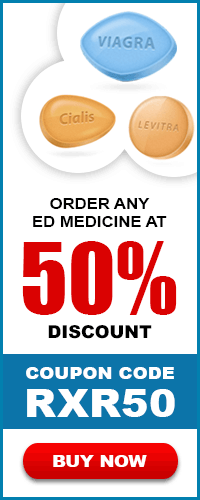About Diaper rash:
It is an ordinary pattern of inflamed skin (dermatitis) which results as a patchwork of luminous red skin on baby's bottom. Diaper rash is usually connected with constant wet or rarely altered diapers, diarrhea, and utilizing plastic pants to envelop your diapers. It also may evolve post consumption of solid foods in baby's diet, while breast-feeding mothers consume particular kind of foods or when your baby is getting treated with some antibiotics.
This disease can buzz parents and irritate babies, but mostly in such cases it can be worked out using simple at-home medication.
Causes of the Disease:
The disease could be aching and agonizing for your little one, but there are several stuffs which you can do so as to aid keeping the disease at bay. Pediatrics suggests that this disease could be caused or provoked by:
- Exorbitant moisture within or surrounding the diaper.
- Chafing or rubbing of the burnt (infected) skin.
- Extended vulnerability to stool or urine.
- Yeast or any kind of bacterial infection.
- An allergic backlash to something in diaper.
Skin disease constitutes later most ordinary type of Jacquest Erythema (Diaper Rash). Bacteria (Staph and Strep) and yeast/fungal (Candida) are common causes which ultimately result in such disease. Usually both of these patterns of contamination lead to conclusion from a division of skin probity and astounding essential defensive mechanisms of skin in diaper region. Staph and Strep bacterial issues causing infections are ordinarily termed as impetigo.
There is really very exceptional resulting in this type of disease. Uncommon epidemics, metabolic, nutritional glitch, immunodeficiency and malignancies states can all together be suspicious. Unfortunately, abusive acts for child, like; hot-water immersion, extreme neglect to infant hygiene can also be a cause for this disease.
Symptoms
The disease may be characterized by following:
- Skin signs – Marked by red, puffy and tender-looking skin in diaper worn areas like: buttocks, thighs and genitals.
- Alteration in your baby's disposition – one may observe as their infant appears more annoying than typical, usually during diaper changes. A baby with this issue generally fusses or cries when the diaper area is cleaned, got in contact with water or even in case it’s being touched.
It can take place intermittently, anytime your child uses a diaper, but they're more usual in babies when they are in their first 15 months, especially between 9 and 12 months of their age.
How is the Disease Diagnosed?
- List and keep a note of your baby's signs and symptoms, and for how long those lasts for your baby.
- Note down your baby's main medical information, consisting of various information for which your baby has been treated and also the prescription or over-the-counter medications which your baby has recently prescribed and consumed. If your baby still undergoes breast-fed, do keep a track on medications he or she may have been consumed to along with breast milk.
- Make a note of all the commodities which comes in contact with your baby's skin. Your baby's pediatrician may want to inquire about which brand of diapers, laundry detergent, soaps, lotions, powders and oils one uses for their baby.
Treatment:
The most liable way to treat kids against this disease is to maintain baby's skin as clean and dry as possible. In case your baby's diaper rash endures during home treatment, your doctor may prescribe:
- A mild dosage form of hydrocortisone cream
- An antifungal cream, if baby persists symptoms of any fungal infection
- Topical or oral antibiotics, if your baby shows any bacterial infection
Utilize creams or ointments along with steroids only in case your pediatrician or dermatologist recommends them, robust steroids or persistent use of it may lead to additional problems.
Jackquest Erythema generally needs several days to enhance and rash may arrive again continuously. If this rash endures instead of instructing treatment.
Lifestyle and home remedies: The most effective, safe and easy way to get away from the rash caused due to diapers is to keep your baby's skin as clean and dry as possible. The best way maintain this is with act of frequent diaper changes.
Prevention:
Some simple approaches which can help in reducing likelihood of this disorder evolving on your baby's skin may be as listed below:
- Altering diapers regularly – Abolish stained diapers expeditiously. If you are laying your child in a child care, ask the staff members to perform the same act.
- Rinse your baby's bottom clean along with water as part of each diaper alteration. Utilization of a sink, tub or water bottle for this purpose is highly recommended. Moist washcloths and cotton balls can also be utilized for the purpose of cleaning the skin. Strictly avoid utilization of wipes which encompasses alcohol or fragrance in it.
- Pat baby dry with the help of clean towel. Avoid scrubbing of your baby's bottom, as this act of scrubbing can lead to irritation of the skin.
- Avoid the practice of overtighten diapers. As diapers which are too tight post wearing makes it too difficult for practicing airflow into diaper region, setting up a moist like in surrounding which is highly liable to possess this kind out defect. Tightfitting diapers can also lead to chafing at waist or thighs.
- Leave your baby's bottom aloof more time without any diaper or clothes. Whenever possible, allow your baby move out without any diapers. Disclosing skin to air is a natural and gentle way keeps the area dry and infection less. In case of avoiding messy accidents, one must try allowing baby on a large towel and keep the baby busy in some playtime while he or she is bare-bottomed.
- In case if you take help of cloth diapers, Wash them very carefully. Pre-soaking of the cloth diapers and using hot water to wash them is suggested.
Post altering the diapers, rinse your hands well using soap. Keeping hands clean and washing hands time to time can restrict from spreading of bacteria or yeast to various parts of baby's body, to you or to other children.






